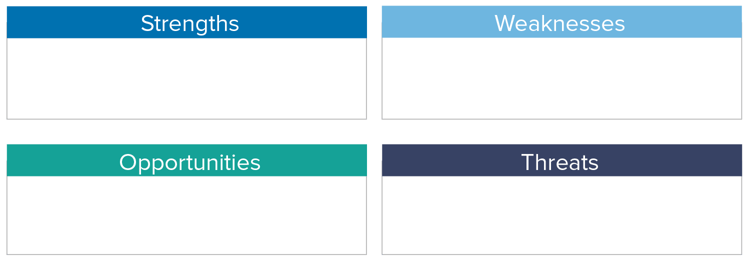
Online travel agents, social media and review sites are fantastic places for prospective travellers to scout for information that will help them choose the right hotels, activities, and restaurants for them, but the online world is also a great place for hoteliers and other travel professionals to gather intelligence on their competition.
The amount of information online means that this intelligence gathering can be overwhelming – TripAdvisor alone receives 16 new reviews every minute. However, with the right technology and tools in place, making sense of the information available to you, turning your “big data” into “smart data” your competitive intelligence can become uniquely useful in informing your operations, marketing and growth strategies. Here are three ways for hoteliers to use competitive intelligence:
-
Perform a SWOT analysis
The SWOT analysis is a fantastic way to organise your thoughts and condense your insights – it works for almost any business, and the hospitality industry is no exception.
“SWOT” stands for Strengths, Weaknesses, Opportunities and Threats. Analysing each of these areas for your competitors will help you to see what you need to be doing to keep up, and where you may have the chance to overtake your competition.
By scrutinising reviews of your competitors on online travel agents and review sites, their interactions with guests on social media, you should be able to analyse each competitor’s:
- Strengths – where does hotel excel, what are they particularly good at? Strengths might be real or perceived.
- Weaknesses – where does this hotel fall short, what should they be fixing? Weaknesses may also be real or perceived.
- Opportunities – how could your hotel overtake this hotel to gain more customers, acquire a higher ranking or a better reputation?
- Threats – how could this hotel harm your business?

Once you have analysed each of your competitors individually, a good practice is to draw up a summary of your findings in a competitor grid that encapsulates your competitions’ key strengths, key weaknesses, and key differentiating factors.
You can then use this information to derive themes, and spot areas where you can fill a gap and differentiate yourself from your competition, and where your competition has the upper hand.
Read rest of the article at Guest Revu



